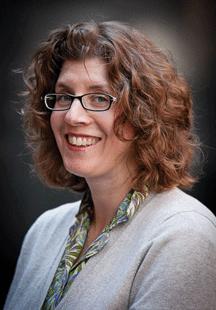
Susan “Suzy” Goldstein Snyder comes to the Midwest next week with a sense of urgency. Rescue missions will do that.
Snyder is a curator for the United States Holocaust Memorial Museum in Washington, D.C. In partnership with the University of Kansas Libraries, she will represent the Museum for two area presentations titled “Rescue the Evidence.” Snyder will discuss how the efforts to find and acquire collections for the Museum are more important than ever.
Snyder’s first “Rescue the Evidence” presentation will be 6-7:30 p.m. on Tuesday, April 17, at the Lawrence Public Library, 707 Vermont St. The second presentation will be 6-7:30 p.m. on Wednesday, April 18, in the BEST Building, 12604 Quivira Road on the KU Edwards Campus, Overland Park. To RSVP contact Courtney Foat at or 785-864-0970.
High on Snyder’s agenda is to impress upon this community that all items associated with the Holocaust — including pre- and post-World War II years — are part of a bigger picture. Every document, photo or artifact is part of a story. Snyder said it’s important to collect items now while the stories can be verbally recounted. Because there is often deep attachment to these items, Snyder will help contributors understand the “how” when it comes to the Museum’s acquiring, recording, archiving and displaying its collections.
“We’re not a traditional museum,” Snyder told The Chronicle. “We deal with survivors, liberators and their children and grandchildren. It’s an emotional decision to decide to donate and then what to donate.”
Snyder’s direct connection to the University of Kansas played a role in her visit to the area. A native of suburban Chicago, she received her bachelor’s degree from KU in 1987. When a group representing the KU Alumni Association recently toured the Holocaust Memorial Museum, she shared how the Museum had very little from the Kansas/Missouri area. Her KU brethren stepped up to help schedule and arrange her presentations.
“The Museum is not connected to the Midwest from a territorial perspective as we’d like to be.” Snyder said.
Attendees can expect Snyder to show a sampling of Holocaust-era artifacts to help demonstrate how virtually all objects regardless of size or seeming insignificance are ultimately important to the Museum’s collections. She wants contributors to understand the objects “don’t go into an archive never to be seen again.” Each piece represents what Snyder considers a “connection.”
“I’ve agonized over one post card or a single photograph,” Snyder said. “We do our due diligence on every piece. These represent a person who has something to say. You can illustrate that with one object.”
Snyder tells of being in the home of a Miami, Florida, family providing the Museum with a series of a documents their grandparents had carried in a suitcase throughout Europe while refugees in World War II. Almost as an aside, the whereabouts of the suitcase was questioned. Turns out the suitcase was being stored in the garage. “The suitcase tells a story, too,” said Snyder.
Snyder considers her upcoming “Rescue the Evidence” presentations to be pro forma. The over-arching objective is to provide information, answer questions and build relationships. She and others from the Museum will revisit the area in order to meet with families interested in contributing materials to the Holocaust Memorial Museum.
“Many of the people we talk to are elderly … they can’t just get on a plane and come to Washington,” Snyder said. “Looking at materials in people’s homes is really preferable.”
In addition to earning a Bachelor of Fine Arts degree from KU, Snyder also has a master’s degree from the City College of City University of New York. She joined the United States Holocaust Memorial Museum as a curator in 1991. She is part of a continuing series on the Museum’s website entitled Curator’s Corner, which highlights artifacts from the permanent collection.


